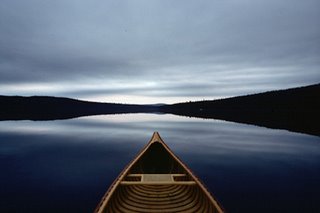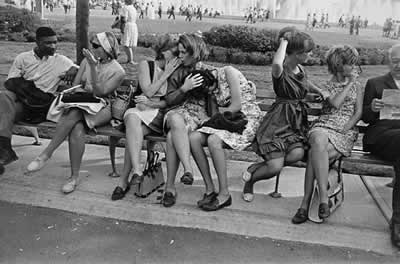|
|
|
|
 | |  |
|
 SW
2007 12 07 13:39
Nedidelė satyra, kurią pabandžiau adaptuoti lietuvių kalbai apie žymias fotografijas ir interneto komentarus :) Na.. visaip būna :) Senokai jau publikuota, bet vis prisimenama ir vis aktuali.
SW
2007 12 07 13:39
Nedidelė satyra, kurią pabandžiau adaptuoti lietuvių kalbai apie žymias fotografijas ir interneto komentarus :) Na.. visaip būna :) Senokai jau publikuota, bet vis prisimenama ir vis aktuali.
Originalas yra čia:
http://theonlinephotographer.blogspot.com/2006/06/great-photographers-on-internet.html

Irving Penn
Sveikas Irvai, aš nežinau ką tu sau galvoji. Tu gavai gražų modelį (tik ji jau nebejauna), tačiau užfiksavai užsimerkusią ir tikrai ne pačioje gražiausioje pozoje.
O didžiausia problema, kad tau REIKĖJO KADRUOTI vertikaliai !!!!
Fonas yra per mažas ir neuždengia visko, tad tenka matyti išlinkimus. Jei atsiųstum man email'ą aš galėčiau pataisyti photoshop'u ir sukadruoti taip kaip reikia. Jei tu nesirūpini daryti viską PREFESIONALIAI tu niekada nedirbsi kaip fotografas profesionalas, patikėk manim !!! Tikiuosi nebuvau per grubus. Aj, tiesa, linkėjimai. M.

Sam Abell
Samai, NUOSTABI scena, +++, viena iš geriausių FotoKūdroje. Tačiau blogai, kad gavosi blankokas dangus. Mėlyna spalva galėjo būti kiek sodresnė. Ir yra tokia taisyklė - negalima kadro dalinti į lygias dalis, dangaus arba žemės (ar čia ežero ?) turi būti daugiau. Bet vistiek puikus darbas ir būtinai užsuk pažiūrėti mano foto, pabalsuok ir palik ten komentarų. Ačiū. Jonas.

Henri Cartier-Bresson
Bonjour Henri, matyt prancūzas esi arba bent supranti prancūziškai. Puiki nuotrauka, man patinka kompozicija ir šuo. Mes irgi turėjome labai panašų šuniuką. Tavo problema yra ta, kad fokusuota ne ten kur reikia - žmogus yra nefokuse, neryškus. Fotoaparatas netyčia sufokusavo žmones tarpduryje, o pagrindinės figūros neryškumas blaško dėmesį. Šiaip jau reiktų fokusuoti į artimiausius objektus ir net aparatas pasirenka artimiausia didelį daiktą, o čia įvyko klaida. Bet šiaip visai nieko. Algis.

Garry Winogrand
Sveikas, Garry. + gerai tu čia pagavai. Bet problema yra ta, kad horizontas tai kreivas, o man nepanašu tai į nuokalnę. Dar dešinėje vyrą reiktų nukirpti ir pašalinti iš kadro. Kartais man padeda tai, kad aš prieš fotografuojant pašaukiu žmones ir sulaukiu jų dėmesio. Jei ir tu taip būtum padaręs, galėtum pamatyti aiškiau jų veidus.

Bill Brandt
Bilai, problema yra visiškas detalių nebuvimas šešėlyje. Kai kurie objektyvai duoda geresnį kontrastą šešėlyje, nei kiti. Canon L klasės objektyvai tinka geriausiai, tai reiktų apie juos pagalvoti - tai tikrai pagerintų tavo fotografijas. Dar reikia matyti abi akis, tai duoda didesnį gilumo pojūtį. Kokį objektyvą naudojai šiai nuotraukai ? Pereksponavai ranką - ji visai balta. Vytas.

Keith Carter
Keit: Geras bandymas, bet fokusuota visai į ne į tą arklio galą !!! O sukomponuoti vaizdą į kvadratą visada yra sudėtinga, nesijausk dėl to blogai. Kartais mes fotografai turime tiesiog tenkintis tuo ką gavome.
Linas.

William Eggleston
Čia tai nuotrauka skirta šeimos albumui. Aš net nedrįsčiau jos rodyti. Jei jau tu rodai nuotrauką, tai bent įsitikink, kad tai kažkas neįprasto, originalaus, su savu požiūriu. Kitaip visai prarasi žiūrovų susidomėjimą ir greit tavo darbų niekas net nebežiūrės. Rolandas [Nikon D200, Nikon D70s atsarginis, 17-35 f/2.8, 80-200 f/2.8, 16GB Sandisc EXtreme III, Photoshop CS3, Epson 2200]

Ralph Gibson
Ralfai, tai tikrai gera idėja ir manau tu turėjai gerą idėja. Bet šešėlis labai blaško dėmesį, tau gal reikėjo žengti žingsnį bent kiek į šalį. O jei ten būtų dar labiau blaškiantis fonas, galėtum atsistoti žingsniu arčiau.
Bet šiaip geras bandymas, sėkmės. Jurga.

Edward Steichen
Per tamsu ir neryšku. Aš manau, kad tu taip ir sakysi, jog toks buvo sumanymas, bet tada kokia to prasmė ? Man patinka kai viskas ryšku. Gal tu pastudijuok kitų žmonių fotografijas internete, kad pajaustum kaip turi gera fotografija atrodyti.

Alex Webb
Ralfai, nematau aiškios kompozicijos šiame kadre ir šešėliai labai jau tamsūs. Tau reiktų naujo DSLR fotoaparato, kuris geriau išryškintų detales šešėlyje, pvz: Fuji S3. Blykstė taip pat čia pagelbėtų.
Tad tik +4 , bet man patinka kai kurie tavo darbai, tad nepamiršk pabalsuoti ir už manus. Zigmas.
» Atsakyti
»
|
|
|
 | |  |
|
|
|
 | |  |
|
 MP
2007 12 07 14:16
fantastika
MP
2007 12 07 14:16
fantastika  !!!!! seniai taip skaniai nesijuokiau. visi mes cia galetume rasti savo komentarus !!!!! seniai taip skaniai nesijuokiau. visi mes cia galetume rasti savo komentarus  geru kadru visiems! geru kadru visiems!
» Atsakyti
»
|
|
|
 | |  |
|
|
|
 | |  |
|
 SW
2007 12 07 16:26
Bet tik nereikia pradėti rimtai žiūrėti (na gal niekas ir nežiūri :) FotoKūdrai manau nėra būdingi tokie komentarai.
SW
2007 12 07 16:26
Bet tik nereikia pradėti rimtai žiūrėti (na gal niekas ir nežiūri :) FotoKūdrai manau nėra būdingi tokie komentarai.
Ir visai atvejais, komentaras yra geriau negu nieko.. O kai rašai, tai gali ir suklysti. Žodžiu, normaliai viskas, rašykite komentarus, komentuokite kuo daugiau :)
» Atsakyti
»
|
|
|
 | |  |
|
 | |  |
|
 hideo
2007 12 07 17:34
jo, šitą jau o.foto mačiau.. juokiausi juodai, ypač kai kažkas ėmesi tokius "žinovus" komentuotojus ginti..
hideo
2007 12 07 17:34
jo, šitą jau o.foto mačiau.. juokiausi juodai, ypač kai kažkas ėmesi tokius "žinovus" komentuotojus ginti..
» Atsakyti
»
|
|
|
 | |  |
|
 | |  |
|
 Linosz Kranowski
2007 12 08 20:28
Linosz Kranowski
2007 12 08 20:28
| Mindaugas Eglinskas rašo: | Bet tik nereikia pradėti rimtai žiūrėti (na gal niekas ir nežiūri  FotoKūdrai manau nėra būdingi tokie komentarai. FotoKūdrai manau nėra būdingi tokie komentarai.
|
nu kur jau, dar ir kaip budingi.
tik tokiu darbu cia nelabai yra. nors tai nesvarbu, nes ir grynosios fotografijos reiksme yra apskritai sumazejusi, seniai.
tobula publikacija! galetu daugeliui atvert akis 
» Atsakyti
»
|
|
|
 | |  |
|
|
|
 | |  |
|
 DD
2007 12 10 0:02
kudroje greiciau akis reiketu atverti tiems, kurie save laiko Bressonais
DD
2007 12 10 0:02
kudroje greiciau akis reiketu atverti tiems, kurie save laiko Bressonais  )) ))
» Atsakyti
»
|
|
|
 | |  |
|
 | |  |
|
 Raimondask
2007 12 10 13:24
kapokit mane į gabalus ,bet William Eggleston "dviratuką" gelbsti tik autoriaus vardas
Raimondask
2007 12 10 13:24
kapokit mane į gabalus ,bet William Eggleston "dviratuką" gelbsti tik autoriaus vardas
» Atsakyti
»
|
|
|
 | |  |
|
 | |  |
|
 MP
2007 12 10 14:32
MP
2007 12 10 14:32
| raimis rašo: | | kapokit mane į gabalus ,bet William Eggleston "dviratuką" gelbsti tik autoriaus vardas |
Eggleston's mature work is characterized by its ordinary subject-matter. As Eudora Welty noted in her introduction to The Democratic Forest, an Eggleston photograph might include "old tyres, Dr Pepper machines, discarded air-conditioners, vending machines, empty and dirty Coca-Cola bottles, torn posters, power poles and power wires, street barricades, one-way signs, detour signs, No Parking signs, parking meters and palm trees crowding the same kerb."
Eggleston has a unique ability to find beauty, and striking displays of color, in ordinary scenes. A dog trotting toward the camera; a Moose lodge; a woman standing by a rural road; a row of country mailboxes; a convenience store; the lobby of a Krystal fast-food restaurant -- all of these ordinary scenes take on new significance in the rich colors of Eggleston's photographs. Eudora Welty suggests that Eggleston sees the complexity and beauty of the mundane world: "The extraordinary, compelling, honest, beautiful and unsparing photographs all have to do with the quality of our lives in the ongoing world: they succeed in showing us the grain of the present, like the cross-section of a tree.... They focus on the mundane world. But no subject is fuller of implications than the mundane world!" Mark Holborn, in his introduction to Ancient and Modern writes about the dark undercurrent of these mundane scenes as viewed through Eggleston's lens: "[Eggleston's] subjects are, on the surface, the ordinary inhabitants and environs of suburban Memphis and Mississippi--friends, family, barbecues, back yards, a tricycle and the clutter of the mundane. The normality of these subjects is deceptive, for behind the images there is a sense of lurking danger."
It may help to compare Eggleston's work to the work of another illustrious Mississippian, William Faulkner, who also drew subject matter from the Mississippi Delta region that is the subject matter of much of Eggleston's art. Both Eggleston and Faulkner drew upon insights of the European and American avant-gardes to help them explore their Southern environs in new and surprising ways. As the writer Willie Morris wrote, Eggleston's "depiction of the rural Southern countryside speaks eloquently of the fictional world of Faulkner and, not coincidentally, the shared experience of almost every Southerner. Often lurid, always lyrical, his stark realism resonates with the language and tone of Faulkner's greatest mythic cosmos of Yoknapatawpha County .... The work of Bill Eggleston would have pleased Bill Faulkner ... immensely." Eggleston seemed to acknowledge the affinity between himself and Faulkner with the publication of his book, Faulkner's Mississippi, in 1990.
» Atsakyti
»
|
|
|
 | |  |
|
 | |  |
|
 Marius Axas
2007 12 10 15:18
Marius Axas
2007 12 10 15:18
| MP rašo: | | raimis rašo: | | kapokit mane į gabalus ,bet William Eggleston "dviratuką" gelbsti tik autoriaus vardas |
Eggleston's mature work is characterized by its ordinary subject-matter. As Eudora Welty noted in her introduction to The Democratic Forest, an Eggleston photograph might include "old tyres, Dr Pepper machines, discarded air-conditioners, vending machines, empty and dirty Coca-Cola bottles, torn posters, power poles and power wires, street barricades, one-way signs, detour signs, No Parking signs, parking meters and palm trees crowding the same kerb."
Eggleston has a unique ability to find beauty, and striking displays of color, in ordinary scenes. A dog trotting toward the camera; a Moose lodge; a woman standing by a rural road; a row of country mailboxes; a convenience store; the lobby of a Krystal fast-food restaurant -- all of these ordinary scenes take on new significance in the rich colors of Eggleston's photographs. Eudora Welty suggests that Eggleston sees the complexity and beauty of the mundane world: "The extraordinary, compelling, honest, beautiful and unsparing photographs all have to do with the quality of our lives in the ongoing world: they succeed in showing us the grain of the present, like the cross-section of a tree.... They focus on the mundane world. But no subject is fuller of implications than the mundane world!" Mark Holborn, in his introduction to Ancient and Modern writes about the dark undercurrent of these mundane scenes as viewed through Eggleston's lens: "[Eggleston's] subjects are, on the surface, the ordinary inhabitants and environs of suburban Memphis and Mississippi--friends, family, barbecues, back yards, a tricycle and the clutter of the mundane. The normality of these subjects is deceptive, for behind the images there is a sense of lurking danger."
It may help to compare Eggleston's work to the work of another illustrious Mississippian, William Faulkner, who also drew subject matter from the Mississippi Delta region that is the subject matter of much of Eggleston's art. Both Eggleston and Faulkner drew upon insights of the European and American avant-gardes to help them explore their Southern environs in new and surprising ways. As the writer Willie Morris wrote, Eggleston's "depiction of the rural Southern countryside speaks eloquently of the fictional world of Faulkner and, not coincidentally, the shared experience of almost every Southerner. Often lurid, always lyrical, his stark realism resonates with the language and tone of Faulkner's greatest mythic cosmos of Yoknapatawpha County .... The work of Bill Eggleston would have pleased Bill Faulkner ... immensely." Eggleston seemed to acknowledge the affinity between himself and Faulkner with the publication of his book, Faulkner's Mississippi, in 1990. |
O Fokiškai nėra? 
» Atsakyti
»
|
|
|
 | |  |
|
 | |  |
|
 MP
2007 12 10 15:39
fokiskai nezinau kaip ieskoti
MP
2007 12 10 15:39
fokiskai nezinau kaip ieskoti  bet ka as norejau pasakyti, kad tas vaikinas savo varda ir uzsidirbo butent is tokiu buitisku dviratuku. bet ka as norejau pasakyti, kad tas vaikinas savo varda ir uzsidirbo butent is tokiu buitisku dviratuku.
» Atsakyti
»
|
|
|
 | |  |
|
 | |  |
|
 Linosz Kranowski
2007 12 10 17:09
Linosz Kranowski
2007 12 10 17:09
| DD rašo: | kudroje greiciau akis reiketu atverti tiems, kurie save laiko Bressonais  )) )) |
Cia visiems reiktu apsisviest kad daug kas nutiko ir po Bressono.
O dauguma nezino ir kas iki jo.
dieve, Duchamp'as buvo pries 100 metu, o cia dar dauguma komentaru a la "nematau cia nieko grazaus".
» Atsakyti
»
|
|
|
 | |  |
|
 | |  |
|
 K. M.
2007 12 10 18:18
Zinoma komentaras "+++", arba "5", bei tylut tylutelis trejetukas- daug patrauklesnis
K. M.
2007 12 10 18:18
Zinoma komentaras "+++", arba "5", bei tylut tylutelis trejetukas- daug patrauklesnis  . Manau butu naivoka tiketis, kad visi cia besilankantys zino bent keletos fotografu pavardes. O tie kas NET zino( . Manau butu naivoka tiketis, kad visi cia besilankantys zino bent keletos fotografu pavardes. O tie kas NET zino(  ), ar gali pretenduoti i fotografijos kritiku kedute. Sveikintina, kad kazkas dar issizioja pries numesdamas --. ), ar gali pretenduoti i fotografijos kritiku kedute. Sveikintina, kad kazkas dar issizioja pries numesdamas --.
Smagi ironija ir tikrai nuotaikingas paporinimas. Ar jis pamokanti? Gal. Dazniau pripeduosim uzciaupe srebtuves:)). Gal uztike toki "giliaminti" destanti savo pozicija, tiesiog bakstelesim pirstu i ka jis turetu atkreipti demesi. Kita iseitis buti ir toliau tokiems patiems sau protingiems ))) )))
» Atsakyti
»
|
|
|
 | |  |
|
|
Puslapiai: 1 2 3
|
Reikia prisijungti norint parašyti atsakymą
|
|
|

|
|
|
|
| | |
|

